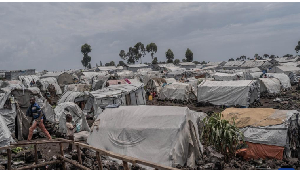Regional News of Wednesday, 1 October 2003
Source: GNA
Sensitisation forum on AIDS held at Akropong-Akuapem
Akropong-Akuapem (E/R), Oct. 1, GNA- Traditional healers at a sensitisation forum on HIV/AIDS have challenged the belief that HIV/AIDS is a killer disease and has no cure.
They contended that AIDS is just like any of the sexually transmitted diseases such as gonorrhoea, which attacked people in the olden days.
According to them, they have cure for the disease but the problem is how they can obtain an operational licence from the Mampong Centre for Scientific Research into Plant Medicine (CSRIPM) to enable them to administer the cure.
The forum was organised by the Ministry for Women and Children's Affairs (MWCA) and the National Commission on Women and Development (NCWD) at Akropong-Akuapem, to educate the people on the harmful traditional practices and their implications for HIV/AIDS.
Those who participated included queen mothers, traditional healers, teachers and representatives of civil societies in the Eastern Region. The NCWD Executive Director, Mrs Mirian Tackie, said in Ghana, Women between 25 years and 35 years are the most afflicted while the men are between 30 and 39 years.
She said the youth, aged between 15 and 34 years, made up about 55.3 percent and described this as serious since the youth constitute the productive age group and the nation's future.
"Let us help our youth to abstain from sex before marriage, or they should use condoms when necessary to protect themselves," she added. She said poverty at times made the women, particularly, young girls, vulnerable to the disease.
Mrs Tackie reiterated the need for women to be educated to acquire skills or a profession for a sustainable livelihood. This would also reduce their dependency on men.
A representative from the National Commission on Culture, Mr Kofi Amoatey, called for the modernisation of traditional practices such as Female Genital Mutilation and widowhood rites, saying this would reduce the HIV infection rate among women and children.










